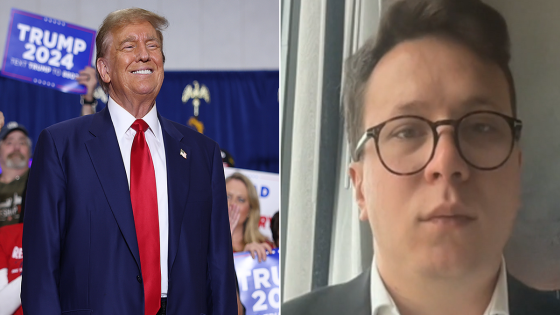When Manny Munoz’s BMW X5 was totaled after being rear-ended last year, he thought he had enough insurance to cover a total loss.
Munoz, of Peoria, Arizona, thought he made a smart financial move when he bought the luxury SUV with the help of an auto loan back in 2020.
Don’t miss
Knowing the car — which he described to AZ Family’s On Your Side as fully “loaded” with all the latest technology and gadgets — would likely depreciate in value faster than he could pay off his loan, he purchased what is known as gap insurance in addition to normal car insurance.
Guaranteed asset protection (GAP) insurance is designed to pay the difference between the actual cash value of a vehicle (after it is damaged or totaled) and the balance still owed on the financing.
In Munoz’s case, he bought the BMW for $60,517.86. At the time of the accident in late 2023, his insurance company wrote him a check for $26,709 — the vehicle’s total value — but he still owed $45,360 on the loan — meaning he had a financial gap of $18,651, which should have been covered by his gap insurance.
However, his sizable gap insurance claim was denied over a 60-cent error in his auto loan paperwork. After seven months trying to claw back the whopping sum, he sought On Your Side’s help to get his expensive issue resolved.
Here’s what happened — and how gap insurance could save you from serious financial pain.
A 60-cent glitch
When Munoz bought his BMW X5 back in 2020, he knew he was paying a premium for it, hence why he bought extra insurance protection. It was the height of the COVID-19 pandemic, and with supply chain issues limiting the availability of brand new cars, many dealerships hiked their prices.
He sought financing through the car dealership for the $60,517.86 purchase price, but what came back from the credit union was an auto loan totaling $60,517.26 — 60 cents shy of the agreed price.
No one caught that 60-cent mistake until Munoz submitted the $18,651 claim to Safe-Guard, his gap insurance company, which he says denied payment over the discrepancy in the paperwork.
Read more: Thanks to Jeff Bezos, you can now use $100 to cash in on prime real estate — without the headache of being a landlord. Here’s how
“It was kicked back because the loan amount didn’t match the contract amount,” Munoz said. He then spent seven months trying to close out his claim with no success until he contacted On Your Side’s Gary Harper.
“I don’t have a problem with being patient, I think I’ve been more than patient,” Munoz said.
Harper contacted Safe-Guard and questioned them about Munoz’s claim. Since the news program got involved, Munoz told Harper he has received notice from the insurer that his claim is finally being processed.
So, while Munoz waits for his check, there are lessons to learn from his story. Namely, do your market research when buying a car to ensure you’re not overpaying, make sure you have enough insurance coverage (and don’t leave any gaps) and always double-check your documents before signing any purchase agreements. This could save you from a costly mistake.
What is gap insurance?
When you buy or lease a new car or truck, it will start to lose value as soon as you drive it off the lot. While depreciation rates vary by vehicle, cars typically shed about 20% of their value in the first year and about 60% within the first five years, according to auto research company Kelley Blue Book.
If your car is totaled, standard auto insurance policies will pay out the current market value of a vehicle at the time of a claim. So, if you bought a car for $20,000 and your car is totaled five years later in an accident, your car (and insurance pay out) may be worth around $8,000.
This could cause problems if — like Munoz — you bought your vehicle using financing, because the amount of money you own on an auto loan or lease may exceed the insurance pay out you would receive in the event of severely damaging or totaling your car.
This is where gap insurance comes into play. It will reimburse you the difference when the insurance pay out for a total loss is less than your outstanding loan or lease balance — ensuring that you’re never upside-down or in negative equity if your car is a write-off.
You can buy gap insurance from most standard auto insurers or auto dealers. The Insurance Information Institute says it’s a good idea to consider buying gap insurance if you bought a car or truck with less than a 20% down payment, you financed the vehicle for 60 months or longer, you bought a vehicle that depreciates faster than others or rolled over negative equity from an old car loan into the new loan.
What to read next
This article provides information only and should not be construed as advice. It is provided without warranty of any kind.
Source Agencies


